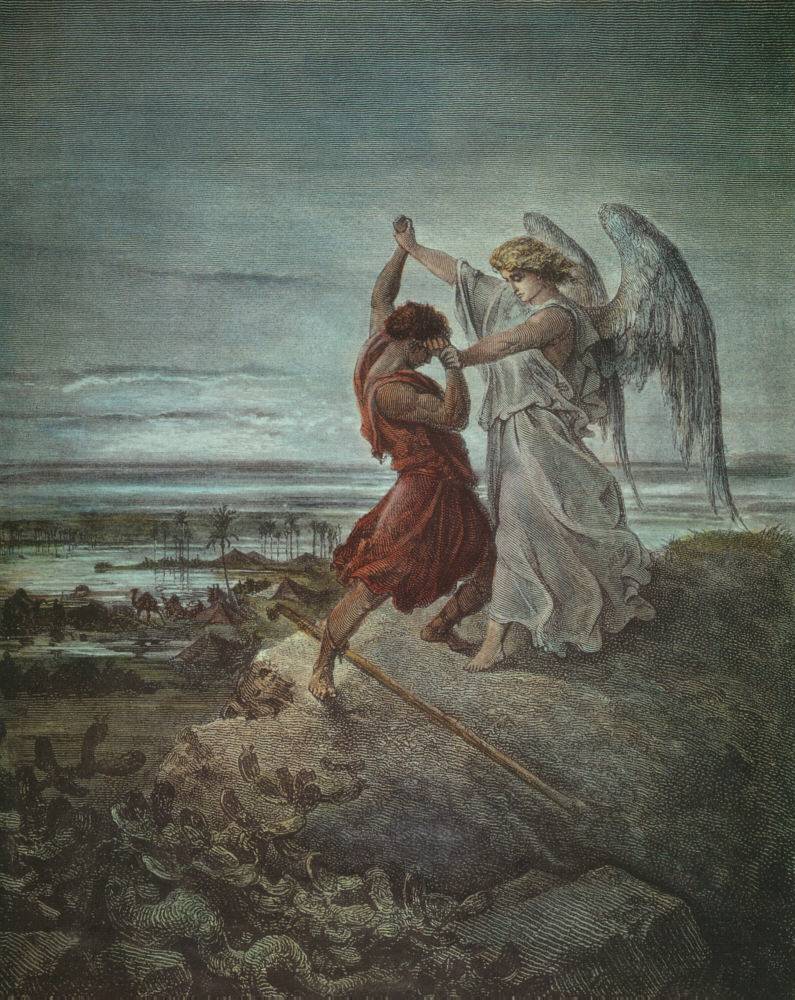Eternal victims
Dara Horn’s People Love Dead Jews offers a worldview of unchangeable victimhood – and she’s wrong.

Is there no escape from antisemitism? That’s what the American novelist and literature professor Dara Horn seems to think. People Love Dead Jews, Horn’s award-winning collection of essays on the ways Jewish persecution is remembered today, offers a worldview rooted in an unchanging, unchangeable victimhood, and a vision of perpetual and inevitable antisemitism. But this is neither an accurate nor a healthy way of seeing the world.
For Horn, “hating Jews was normal” throughout human history. This flattening of the Jewish experience through space and time into a string of pogroms and oppression – reproducing what the historian Salo Baron termed the “lachrymose conception” of Jewish history – requires insisting, rather untenably, that all iterations of antisemitism are part of a unified phenomenon that always ultimately resolves itself in genocide.
Yet Horn’s examples are not limited to acts of violence and persecution. At one point, she calls the Soviet Yiddish orthography – a more phonetic spelling system for the language adopted in the 1920s and 30s, much like other spelling reforms implemented throughout the USSR – a “quite literally antisemitic spelling system.” And the spectre of the Holocaust lurks behind even microaggressions as trivial as some ignorant teenagers being surprised that Horn is blonde and Jewish.
When it comes to the Jews of the Middle East and North Africa, whom she calls “Dead Jews of the Desert,” Horn has nothing to say about the long periods of Jewish-Muslim coexistence and interaction in the region, as if they were a mere prelude to the expulsions of the mid-20th century. She describes the region as “Judenrein” following this exodus, thus illustrating what the historian Lior Sternfeld called the “Holocaustisation” of Middle Eastern Jewish history.
According to Horn, the world is always trying to destroy “Jewish civilisation”; throughout People Love Dead Jews, the antisemitic premise that Jews belong to a separate civilisation goes unquestioned. The Jewish studies professor and rabbi Shaul Magid called such a view of eternally fated Jewish persecution “Judeopessimism,” highlighting how this worldview shares with Afropessimism its ontological claims: that antisemitism transcends history and forms the basis of civilisation. I think a less scholastic term from the jargon of social media can also describe this mindset: “main character syndrome” – in this case, the idea that everyone is obsessed with hating you, to such an extent that they built a whole civilisation around it.
That solipsistic starting point does not lend itself to sound analysis, and the result is a book rife with contradictions. Some of Horn’s sharpest passages come when she invites the reader to think critically about Holocaust education; her recent Atlantic essay Is Holocaust Education Making Anti-Semitism Worse? is what piqued my interest in reading the book. She worries that Holocaust education has set the bar too high for taking antisemitism seriously, leading to the sentiment that “anything short of the Holocaust is, well, not the Holocaust.” This is an important point, but Horn undermines herself by casually likening BDS campaigns on contemporary college campuses to Nazi anti-Jewish boycotts – a comparison that grossly trivialises the Holocaust.
This refusal to distinguish between antisemitism and criticism of Israel should not be surprising given the Zionist logic that structures her thinking: the world will always victimise Jews, so Jews need a state where they can be perpetrators of violence, not its victims. Of course, she has nothing to say about the Israeli state as a perpetrator; for her, even Jews living in Israel are victims – of Palestinian antisemitic violence.
In fact, Zionism is central to Horn’s conception of Judaism; she goes so far as to contend that there is only one way to be Jewish, and its necessary components are “religious practice, traditional texts, Hebrew, and Zionism” – anything else amounts to complicity with those who seek to destroy the Jewish people. This is an especially strange stance for a scholar of Yiddish literature to take, given how many Yiddish writers articulated ways of being Jewish that explicitly rejected some, and sometimes all, of those components.
Forever animating the world
It is with this conception of Jewishness in mind that she considers the book’s lone righteous gentile: Varian Fry, who heroically helped rescue hundreds of European Jewish artists and intellectuals from the Nazis by bringing them to the United States. Yet Horn is ultimately ambivalent about him. She celebrates Fry – rightly so – but laments that his mission was to save “European culture” and “Western civilisation,” not Jewish culture and civilisation. Those he saved were secular, assimilated Jews, like the philosopher Hannah Arendt or the artist Marc Chagall, who failed to meet Horn’s criteria of Jewishness.
Another contradiction lies in the chapter on Shakespeare’s The Merchant of Venice and its character Shylock, the greedy Jewish moneylender. To Horn, Shylock renders the play “irredeemably antisemitic.” She rejects as “wokeness” any reading of the play that would suggest otherwise, such as articles that see it as “a commentary on the Other,” or a critique of Christianity. Throughout the chapter, she argues for rejecting “historical context” in reading the play; it is too antisemitic to be contextualised, she contends, and so it can’t be read as a “product of its time.”
Such an argument would be fine on its own; Horn is hardly the first to call The Merchant of Venice antisemitic. But in the very next chapter, she finally tires of dwelling on hatred and swaps reading news of antisemitic attacks for Daf Yomi, daily Talmud study. As she does so, she recognises that the Talmud has value as a text despite the offence it would cause many readers today.
“I was surprised by how little I was bothered by the things I didn’t agree with,” Horn writes. “Perhaps you will be shocked to hear, for instance, that a fifth-century text says unenlightened things about women. I could hardly have cared less. I was more surprised by how enchanted I was by what almost no one would agree with, or at least no mature adult.”
Horn’s facetious remark about this “fifth-century text” implies recognition that the historical context of the Talmud differs from our own, or in other words, that it should be read as a product of its time. Moreover, she is able to find meaning and value in the text despite disagreeing with aspects of it, such as its sexism – exactly what she could not do with Shakespeare’s antisemitism. In fact, she spent the entire Shakespeare chapter inveighing against the possibility or validity of such a historicising reading.
The point is not to nitpick about Horn’s inconsistent literary methodology. Rather, this contradiction in reading stems from, and illustrates, the basic problem of People Love Dead Jews and Horn’s worldview: conceiving of antisemitism as a phenomenon that cannot be historicized, a kind of mystical Weltgeist, an eternal force forever animating the world.
More importantly, if antisemitism is so inevitable, that raises a question that Horn cannot answer: what would be the point in fighting it? Indeed, such a task would be impossible, or at best would require no less than replacing all of civilisation with something new.
Fortunately, Horn is wrong. “Hating Jews” is not the eternal state of the world, nor is it the bedrock of civilisation, Western or otherwise. It is a real and serious problem, one worth fighting against – and worth historicising. Understanding the contexts that help produce racist hatred and persecution, whether historical or present, is a crucial tool for struggling against them. And a worldview based in perpetual victimhood is neither healthy nor a useful way to overcome antisemitism.▼
Alexander Jabbari is an assistant professor of Asian and Middle Eastern Studies at the University of Minnesota.
Author
Alexander Jabbari is an assistant professor of Asian and Middle Eastern Studies at the University of Minnesota.
Sign up for The Pickle and New, From Vashti.
Stay up to date with Vashti.



